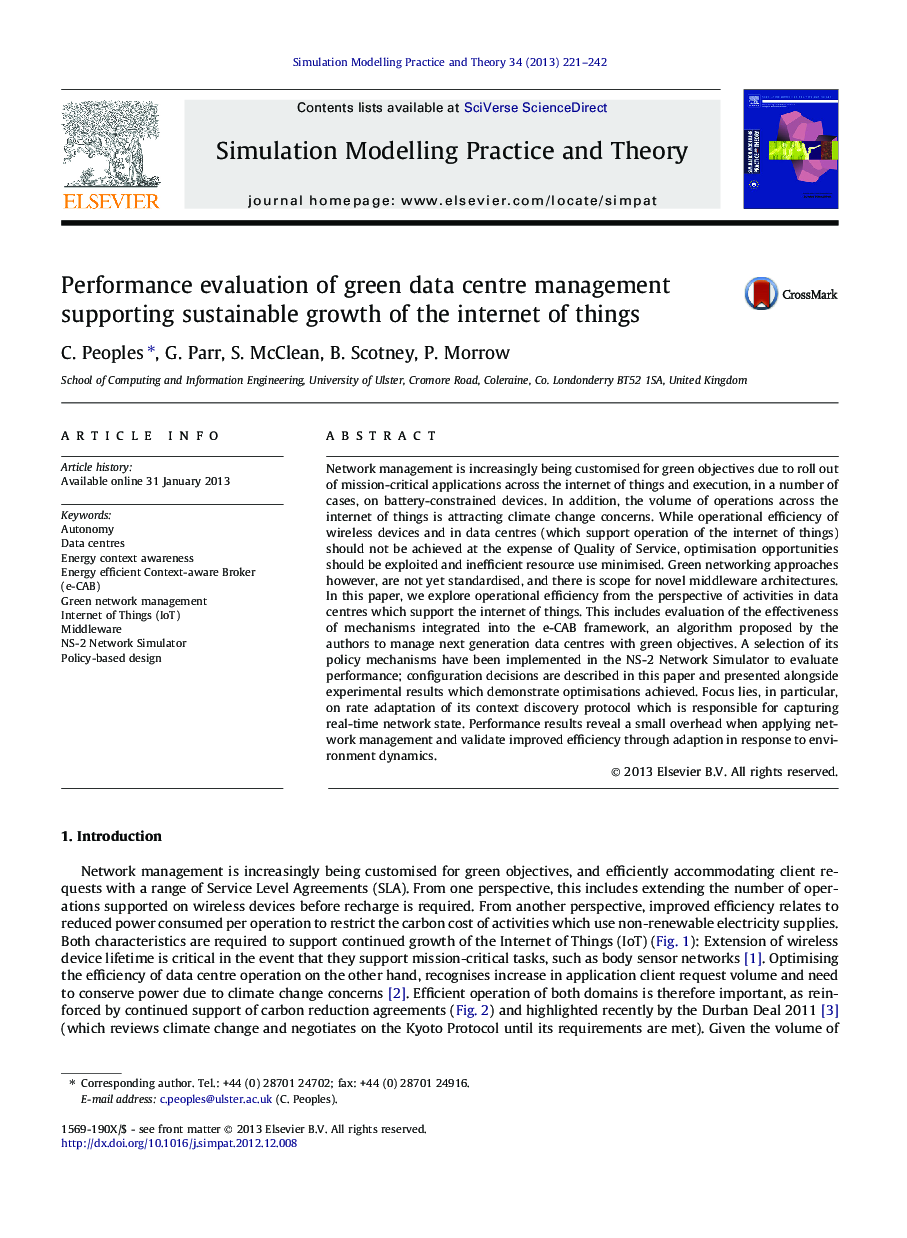| Article ID | Journal | Published Year | Pages | File Type |
|---|---|---|---|---|
| 492219 | Simulation Modelling Practice and Theory | 2013 | 22 Pages |
Network management is increasingly being customised for green objectives due to roll out of mission-critical applications across the internet of things and execution, in a number of cases, on battery-constrained devices. In addition, the volume of operations across the internet of things is attracting climate change concerns. While operational efficiency of wireless devices and in data centres (which support operation of the internet of things) should not be achieved at the expense of Quality of Service, optimisation opportunities should be exploited and inefficient resource use minimised. Green networking approaches however, are not yet standardised, and there is scope for novel middleware architectures. In this paper, we explore operational efficiency from the perspective of activities in data centres which support the internet of things. This includes evaluation of the effectiveness of mechanisms integrated into the e-CAB framework, an algorithm proposed by the authors to manage next generation data centres with green objectives. A selection of its policy mechanisms have been implemented in the NS-2 Network Simulator to evaluate performance; configuration decisions are described in this paper and presented alongside experimental results which demonstrate optimisations achieved. Focus lies, in particular, on rate adaptation of its context discovery protocol which is responsible for capturing real-time network state. Performance results reveal a small overhead when applying network management and validate improved efficiency through adaption in response to environment dynamics.
